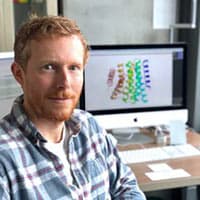
Nanotechnology: molecular machines, atomically-precise construction TJ’s background in protein design, machine learning and robotics provides a unique perspective to tackle building functional protein assemblies. He completed my Ph.D. in computer science at the University of Massachusetts Amherst with Oliver Brock where he applied machine learning and robotics algorithms toward protein structure prediction. Since then, he has been a postdoctoral fellow with David Baker at the University of Washington studying protein design where he does both computational algorithm development and testing of the designed proteins in the wet-lab. TJ’s postdoctoral work pioneered modular repeat proteins that can be connected together like building blocks which he demonstrated in recent first-author papers in PNAS(in review) and Nature. In the Nature publication he shows that large de-novo repeat proteins can be designed from scratch with atomic level precision. In PNAS(in review) he shows that these repeat proteins can be connected together like legos into arbitrary nano-scale shapes. As part of these papers he developed several algorithms that dramatically improve the computational efficiency of building and testing de-novo proteins. These algorithms will likely impact science much more broadly than the repeat proteins. These algorithms have already enabled numerous projects within the Baker lab ranging from protein/peptide binders, to gated membrane channels and protein motors. In his academic lab, he will build a research program around using deep learning to design functional protein assemblies for immunological applications, and hybrid protein materials for bioelectronic applications.